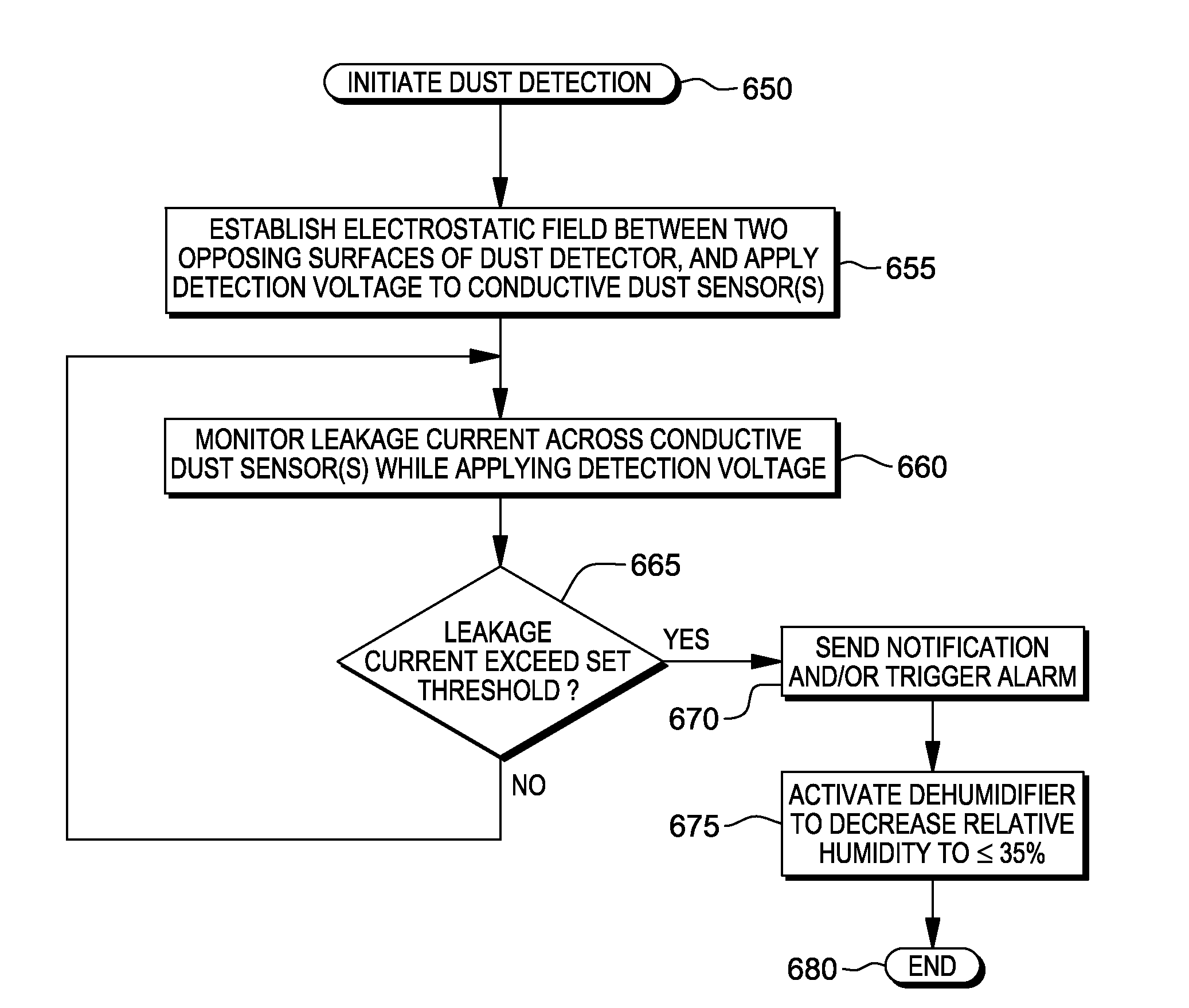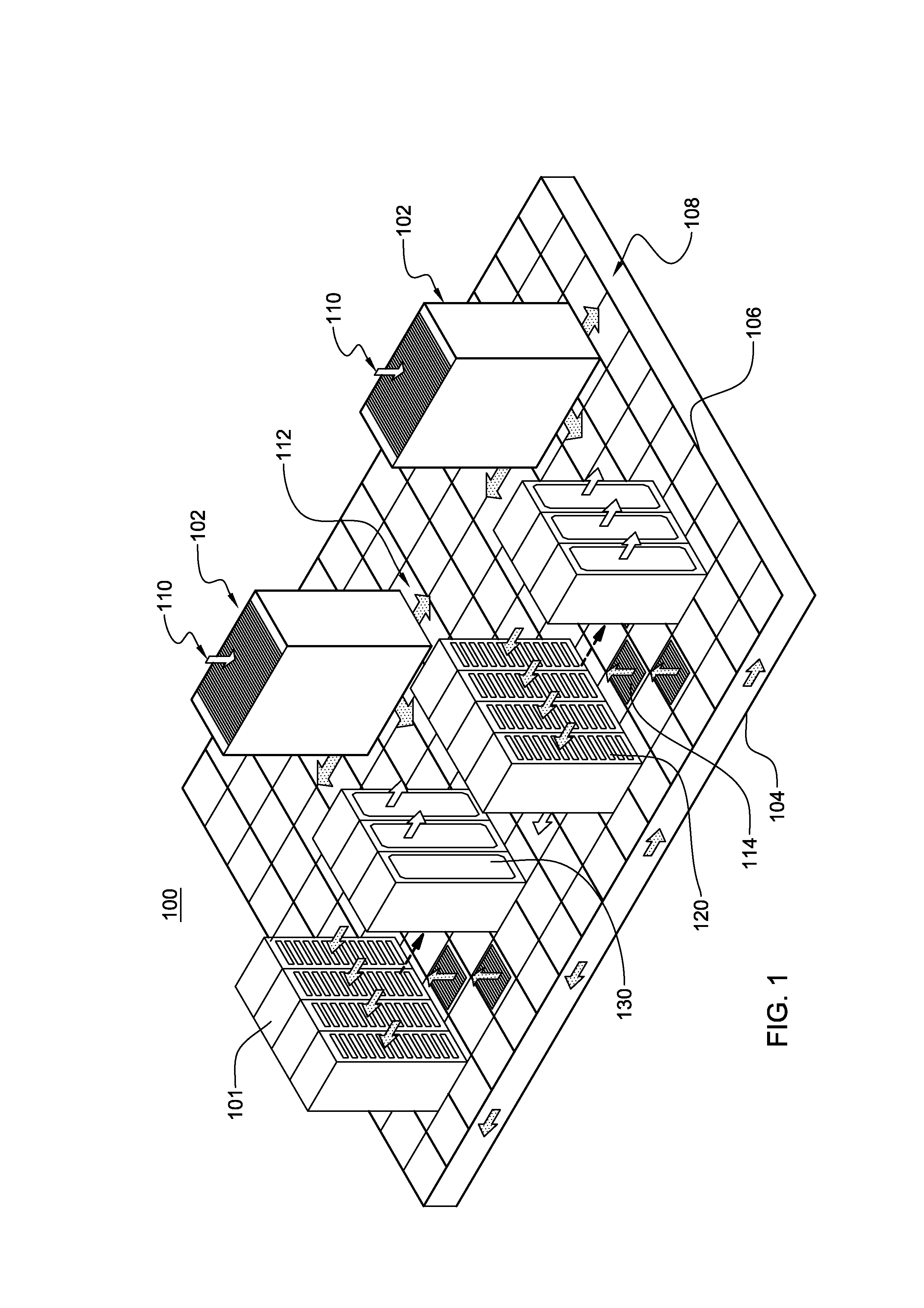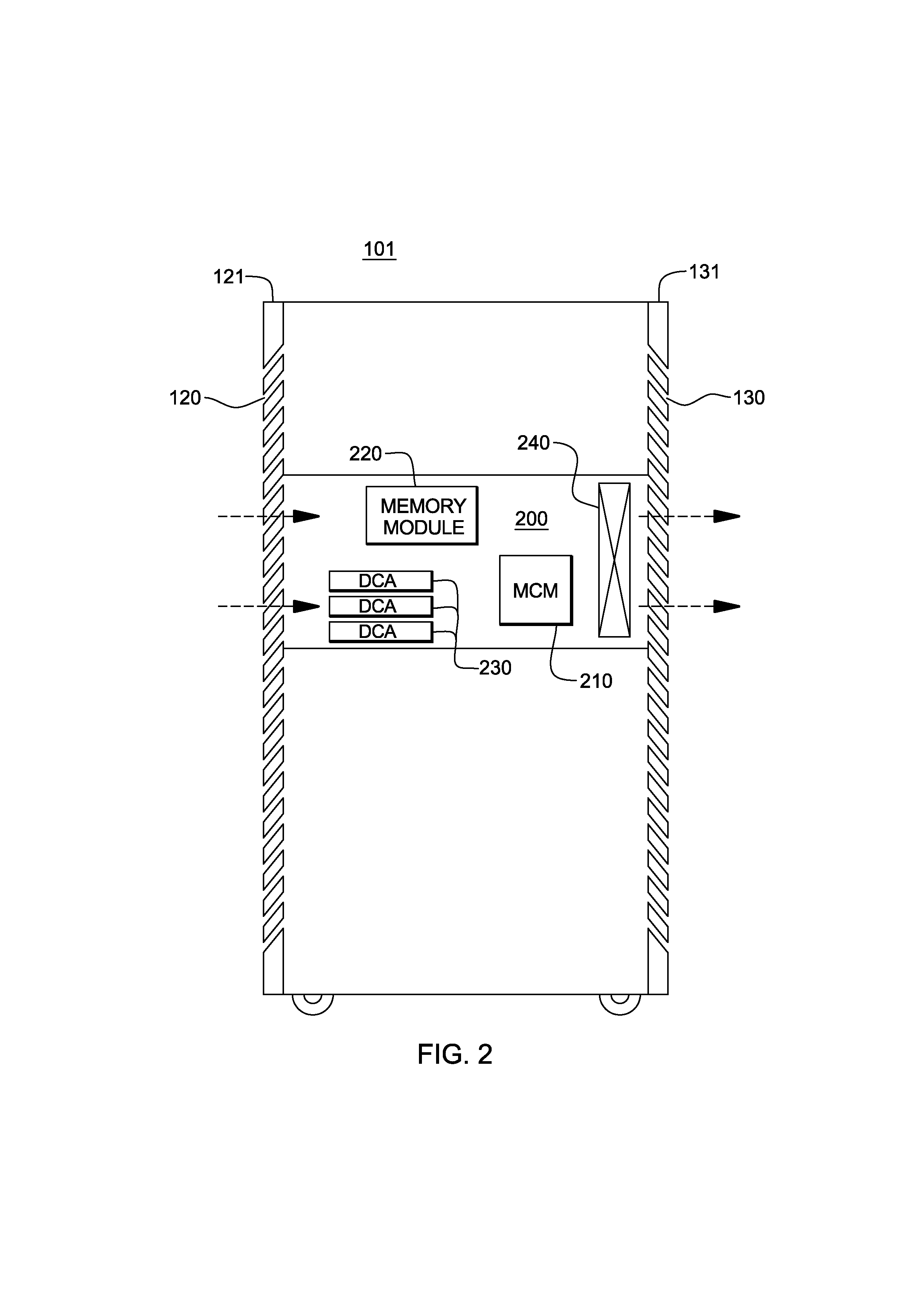Conductive dust dectection
a technology of conductive dust and dectection, which is applied in the field of conductive dust dectection, can solve the problems of affecting the reliability of the system, short circuiting of one or more electronic components within the rack, and affecting the ability of the system to operate normally, so as to facilitate the passage of airflow
- Summary
- Abstract
- Description
- Claims
- Application Information
AI Technical Summary
Benefits of technology
Problems solved by technology
Method used
Image
Examples
Embodiment Construction
[0019]As used herein, the term “electronics rack”, includes any housing, frame, rack, compartment, blade server system, etc., having one or more heat generating components of a computer system or electronic system, and may be, for example, a stand-alone computer processor having high, mid or low end processing capability. In one embodiment, an electronics rack may comprise multiple electronic systems, each having one or more heat generating components disposed therein requiring cooling. “Electronic system” refers to any sub-housing, blade, book, drawer, node, compartment, etc., having one or more heat generating electronic components disposed therein. Each electronic system of an electronics rack may be movable or fixed relative to the electronics rack, with the central electronic complex (CEC) nodes of an IBM System z® mainframe computer being one example of electronic systems of an electronics rack. Further, “data center” refers to a computer installation containing one or more el...
PUM
 Login to View More
Login to View More Abstract
Description
Claims
Application Information
 Login to View More
Login to View More - R&D
- Intellectual Property
- Life Sciences
- Materials
- Tech Scout
- Unparalleled Data Quality
- Higher Quality Content
- 60% Fewer Hallucinations
Browse by: Latest US Patents, China's latest patents, Technical Efficacy Thesaurus, Application Domain, Technology Topic, Popular Technical Reports.
© 2025 PatSnap. All rights reserved.Legal|Privacy policy|Modern Slavery Act Transparency Statement|Sitemap|About US| Contact US: help@patsnap.com



